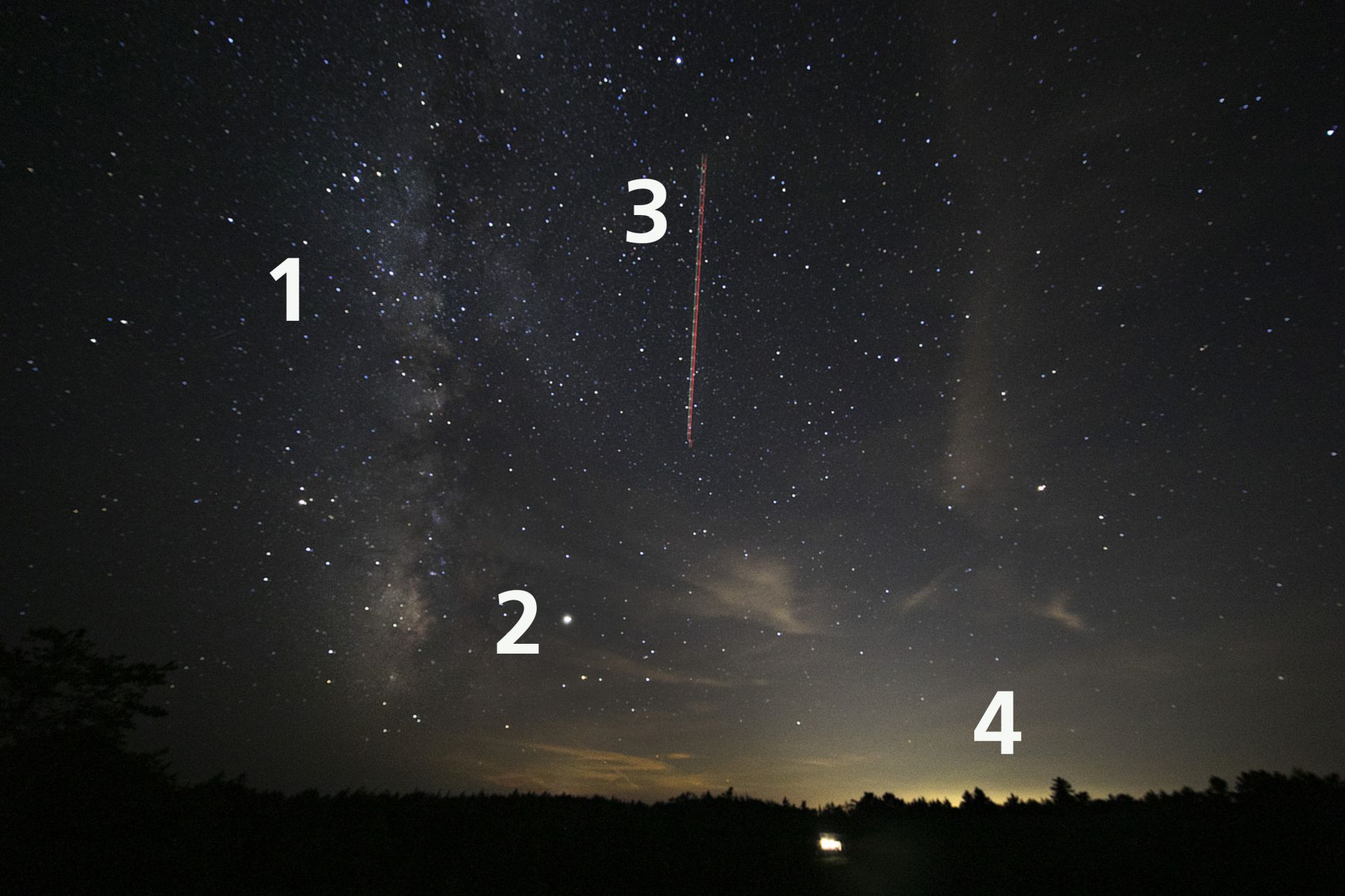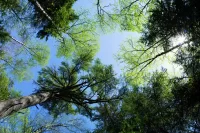
As the summer sun set over Meetinghouse Pond in Phippsburg, Maine, on July 29, the show got started.
This time-lapse video, filmed at the college’s Coastal Center at Shortridge by Bates photographer Theophil Syslo, kicks off with the afternoon sun barreling toward the western horizon.
After a fade to black, the video picks up again around 11 p.m. with the viewer looking south. The camera then pans to the west and then north. The segment ends around 1 a.m.
All the while, the sky appears to rotate, due to the Earth’s rotation. (The camera itself is moving and rotating, too, thanks to Syslo’s three-axis setup.) The 22-second video comprises hundreds of still images taken 40 seconds apart. The night images were taken with a 30-second exposure to effectively capture starlight.
This time-lapse video begins with the sun setting over Meetinghouse Pond on July 29. Then the night show gets started.
“That’s cool!” said Assistant Professor of Physics Aleks Diamond-Stanic after viewing the video.
He said more, in fact. A researcher who studies the interactions of gas within galaxies, Diamond-Stanic offered to be our guide to the Maine sky. (For help identifying planets, stars, and constellations, he recommends this interactive sky chart.)
At the video’s 10-second mark, Diamond-Stanic notes that “the Milky Way extends across the sky, more or less vertically, from the constellation Sagittarius, near the horizon, to the constellation Sagitta, near the top of the screen.”
Also prominent, he says, is Jupiter, “to the right of the Milky Way, lower in the sky, a bit above the star Antares. Saturn is visible to the left of the Milky Way.”
At around the 20-second mark — nearing midnight — “we see the blue star Vega high in the sky, while Jupiter disappears from our field of view,” he says. Meanwhile, low in the sky at right is the Big Dipper (Ursa Major). “We see the star Arcturus about to set below the horizon,” and, since the view is now to the north, “the North Star (Polaris) is at top right.”

Four items in the night sky above the Coastal Center at Shortridge; (1) the Milky Way; (2) Jupiter; (3) the trail of a passenger jet during the 30 seconds of the image exposure, with red dots indicating its flashing beacon; and (4) light from the city of Portland, made prominent by the long exposure. (Theophil Syslo/Bates College)
Besides heavenly bodies, viewers of the video can see occasional streaks of light. Those aren’t meteors but the paths of passenger planes with their beacons flashing, likely heading toward Europe.
In fact, the nighttime skies over Maine are a popular route for jets traveling east toward Europe. And in the morning, jets often pass overhead traveling west, arriving from Europe. (U.S. airlines typically fly more overnight routes to Europe so their planes can make return flights on the day they arrive.)
Meanwhile, the diffuse light seen on the western horizon comes from the city of Portland, about 25 miles down the coast. While Maine has some of the darkest skies in the country — perfect for stargazing — light pollution worldwide continues to increase. It’s becoming “difficult for people to be able to see and appreciate the beauty of the dark night sky,” says Diamond-Stanic.
“The clear view of the night sky shown in this time lapse motivates human curiosity about our place in the universe.”

Seen in 2017, Assistant Professor of Physics Aleks Diamond-Stanic works with José Ruiz ’19, who graduated in May with a physics degree. (Phyllis Graber Jensen/Bates College)
About an hour’s drive from campus in Phippsburg, the Bates College Coastal Center at Shortridge sits on 80 acres of woodlands and wetlands. The center provides residential support for academic programs and extracurricular activities, including facilities for field research, meetings, retreats, and conferences.
Adjacent to the center is Bates–Morse Mountain Conservation Area, comprising some 600 acres of permanently protected salt marshes and coastal uplands that Bates manages for research and educational purposes.




